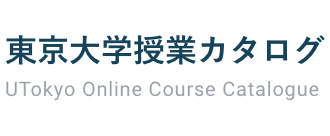過去(2024年度)の授業の情報です
学内のオンライン授業の情報漏洩防止のため,URLやアカウント、教室の記載は削除しております。
最終更新日:2025年4月21日
授業計画や教室は変更となる可能性があるため、必ずUTASで最新の情報を確認して下さい。
UTASにアクセスできない方は、担当教員または部局教務へお問い合わせ下さい。
最終更新日:2025年4月21日
授業計画や教室は変更となる可能性があるため、必ずUTASで最新の情報を確認して下さい。
UTASにアクセスできない方は、担当教員または部局教務へお問い合わせ下さい。
グローバル教養科目(Sociolinguistics in a Global Society)
Sociolinguistics in a Global Society
Students are welcome to this class where we will learn about and discuss issues surrounding global society and language. Sociolinguistics analyzes the many and diverse ways in which language and society entwine. It studies how language affects, and is affected by, issues such as identity, gender, ethnicity, education, class, sexuality, power, and culture. These are all areas in which students and instructors will have had experiences and this course aims for us to be able to share these experiences, as well as our thoughts and opinions on these topics.
A multiplicity of languages and the socio cultural and socio historical backgrounds behind those language users will influence policy making as we try to achieve the goals set out by the 17 SDGs. Therefore, it is vital for us to have a good understanding of the role of language in society and how an understanding of it can aid us in achieving our global development objectives. An example of this is language diversity, particularly in an age of vulnerable populations across the globe. Understanding the linguistic diversity of these populations can help us make decisions in a linguistically plural manner that is inclusive.
By the conclusion of this course, it is hoped that you will have obtained knowledge of sociolinguistics and the role language plays in sectors relevant to global society through readings and class discussions. You will have ample opportunity to share your thoughts and opinions on these issues as we gain a collective understanding of how language will enable us to work towards the SDGs and navigate obstacles along the way.
A multiplicity of languages and the socio cultural and socio historical backgrounds behind those language users will influence policy making as we try to achieve the goals set out by the 17 SDGs. Therefore, it is vital for us to have a good understanding of the role of language in society and how an understanding of it can aid us in achieving our global development objectives. An example of this is language diversity, particularly in an age of vulnerable populations across the globe. Understanding the linguistic diversity of these populations can help us make decisions in a linguistically plural manner that is inclusive.
By the conclusion of this course, it is hoped that you will have obtained knowledge of sociolinguistics and the role language plays in sectors relevant to global society through readings and class discussions. You will have ample opportunity to share your thoughts and opinions on these issues as we gain a collective understanding of how language will enable us to work towards the SDGs and navigate obstacles along the way.
時間割/共通科目コード
コース名
教員
学期
時限
7V0101026
FGL-GL3126S3
グローバル教養科目(Sociolinguistics in a Global Society)
Perry Simon James
月曜5限
講義使用言語
英語
単位
2
実務経験のある教員による授業科目
NO
他学部履修
可
開講所属
グローバル教育センター
授業計画
WEEK 1: Course orientation
WEEK 2: Introduction to Sociolinguistics and Global Society
WEEK 3: Language and Identity I
WEEK 4: Language and Identity II
WEEK 5: Language and Gender
WEEK 6: Language and Social Class
WEEK 7: Language and Power
WEEK 8: Language and Migration
WEEK 9: Language and Racism
WEEK 10: Language in Education
WEEK 11: Multilingualism
WEEK 12: Class presentations & discussion
WEEK 13: Class presentations & discussion
授業の方法
Class activities will revolve around discussions based on readings on a variety of sociolinguistic themes as outlined in the class schedule. The classes will be student-centered as an opportunity for you to share your experiences, thoughts, and opinions in relation to the themes discussed. Each week students will be given a segment of reading on which they are expected to report back to the class.
成績評価方法
【Please note that this course uses a five-point grading scale of A+, A, B, C, or F(Fail).】
The evaluation of the course will be based on active participation in class discussions, tasks set for homework, and an audio PowerPoint presentation to be submitted at the end of semester.
Final grade will be based on three major aspects of your work as follows:
Presentations: 30%
Homework assignments: 30%
Class participation: 40%
教科書
There is no official textbook that needs to be purchased.
参考書
Reading materials will be provided or links given to online resources.
履修上の注意
【If the number of students enrolling in this course exceeds 20, there may be a selection process. Instructions for the selection process will be given in the first class, so if you are interested in taking this course, please be sure to attend the first class.】
Enrolled students should be able to read English academic papers and engage in English discussions.
No previous knowledge is needed as each reading will serve as an introduction to the topic.
(1) Up to 20 students will be, in principle, allowed to register for this class.
(2) If more than 20 students come to the first class, instructors make a selection. For details, please follow their guidance.





 学部後期課程
学部後期課程

 マイリストに追加
マイリストに追加
 マイリストから削除
マイリストから削除


